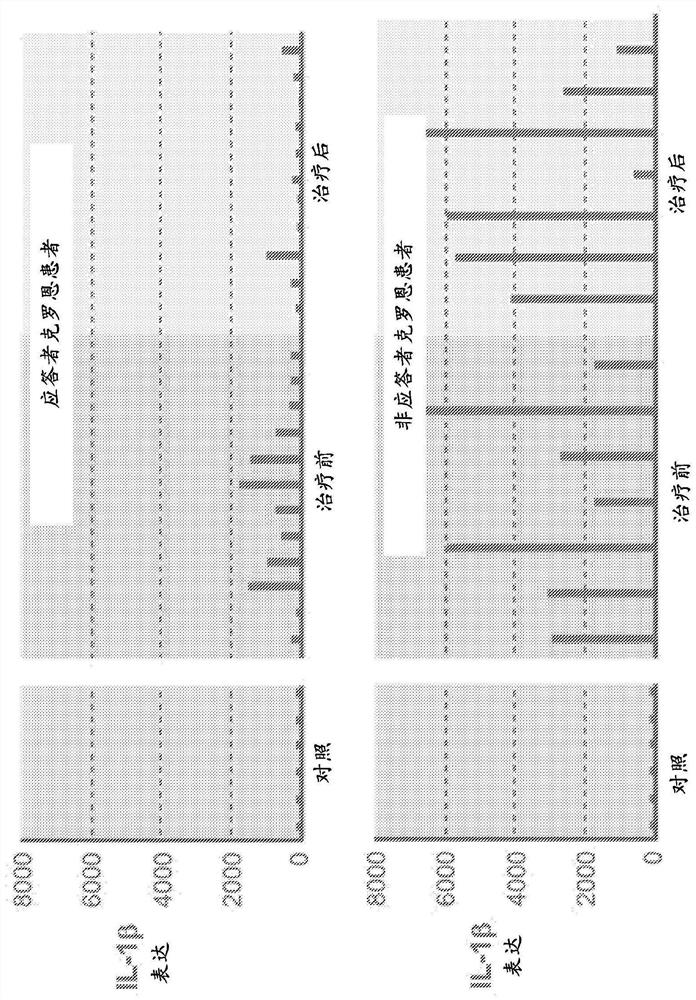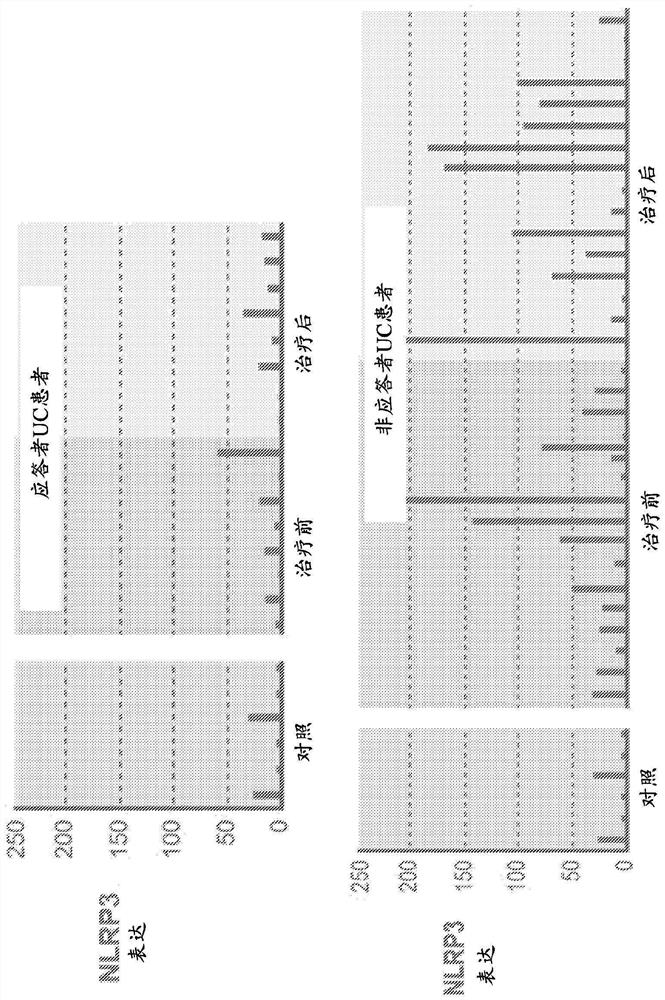Methods of treating or selecting a treatment for a subject resistant to TNF inhibitor using a nlrp3 antagonist
An antagonist and subject technology, applied in anti-inflammatory agents, antibody medical ingredients, organic active ingredients, etc., can solve problems such as poor systemic bioavailability, low permeability, etc.
- Summary
- Abstract
- Description
- Claims
- Application Information
AI Technical Summary
Problems solved by technology
Method used
Image
Examples
example 1
[3804] Example 1. Research
[3805]The CARD8 gene is located within the inflammatory bowel disease (IBD) 6-linked region on chromosome 19. CARD8 interacts with NLRP3 and apoptosis-associated speck-like protein to form a caspase-1 activation complex called the NLRP3 inflammasome. The NLRP3 inflammasome mediates interleukin-1θ production and secretion by processing pro-IL-1θ into mature, secreted IL-1θ. In addition to its role in the inflammasome, CARD8 is also a potent inhibitor of nuclear factor NF-κB. NF-κB activation is critical for pro-IL-1 production. θ Since overproduction of IL-1θ and dysregulation of NF-κB are hallmarks of Crohn's disease, CARD8 is considered as a risk gene for inflammatory bowel disease in this paper. A significant association between CARD8 and Crohn's disease was detected for the minor allele of the non-synonymous single nucleotide polymorphism (SNP) of the C allele at rs2043211 in two UK studies have risk implications. This SNP introduces a prem...
example 2
[3823] Example 2. Treatment of anti-TNFα resistant patients with NLRP3 antagonists
[3824] PLoS One [PLOS ONE] 2009 Nov 24;4(11):e7984 Described in response to corticosteroids and Mucosal biopsies were obtained upon endoscopy in actively inflamed mucosa of patients with ulcerative colitis refractory to immunosuppression and in normal mucosa from control patients. Patients in this study were classified as responders or non-responders for response to infliximab based on endoscopic and histological findings at 4-6 weeks after the first infliximab. Transcriptomic RNA expression levels of these biopsies were obtained by the inventors of the invention disclosed herein from the publicly available Gene Expression Omnibus GSE 16879 (https: / / www.ncbi.nlm.nih.gov / geo / geo2r / ?acc =GSE16879). Expression levels of RNAs encoding NLRP3 and IL-1β were determined based on probe sets 207075_at and 205067_at, respectively, using GEO2R (a tool available on the same website). Surprisingly, it wa...
example 4
[3830] Example 4. Research
[3831] It is proposed that NLRP3 antagonists reverse anti-TNF resistance-induced T cell depletion / apoptosis in biopsy samples from IBD patients whose disease is clinically considered resistant or unresponsive to anti-TNF therapy.
[3832] The study was designed to determine: whether NLRP3 antagonists inhibit inflammasome function and inflammatory activity in cells and biopsy samples from patients with Crohn's disease or ulcerative colitis; Synergy with anti-TNFα therapy in colitis patients.
[3833] A secondary objective of the study was: to determine whether NLRP3 antagonists reduce inflammasome activity in Crohn's disease and ulcer biopsy samples (comparing results in Crohn's disease and ulcerative colitis with those in control patients ); to determine whether NLRP3 antagonists reduce inflammatory cytokine RNA and protein expression in Crohn's disease and ulcerative colitis samples; to determine whether NLRP3 antagonists induce Crohn's disease i...
PUM
 Login to View More
Login to View More Abstract
Description
Claims
Application Information
 Login to View More
Login to View More - R&D
- Intellectual Property
- Life Sciences
- Materials
- Tech Scout
- Unparalleled Data Quality
- Higher Quality Content
- 60% Fewer Hallucinations
Browse by: Latest US Patents, China's latest patents, Technical Efficacy Thesaurus, Application Domain, Technology Topic, Popular Technical Reports.
© 2025 PatSnap. All rights reserved.Legal|Privacy policy|Modern Slavery Act Transparency Statement|Sitemap|About US| Contact US: help@patsnap.com



